Pilot Hill Raises the Vision for Land Conservation in SE Wyoming
By Paul Moberly, AICP PCED, Editor, Western Planner; and Sarah Brown Mathews, Executive Director, Pilot Hill, Inc.
When Sarah Brown Mathews was growing up in Laramie, she would wander and explore the sweeping open fields just east of town. To locals, the area has long been known as Pilot Hill from the namesake formation on its eastern side, but then it was a working landscape; a part of the historic Warren Livestock ranch. For many years, the landowner did not mind if children played about the rocky limestone cliffs, junipers, bristlecone pines, and grasses all topped in wide open blue skies. Little did she know that years later, Sarah would be one of many who would help to preserve that area for countless future generations to enjoy.
“Having grown up in Laramie, I often tried to follow Spring Creek to the source,” recalled Mathews. “I’m one of those lucky people that grew up calling Wyoming home.” Like Mathews, those who call Laramie, Wyoming home now have a newly preserved recreational and natural amenity: the Pilot Hill Recreational and Wildlife Habitat Management Area.
View West from up on the site (courtesy Pilot Hill, Inc.).
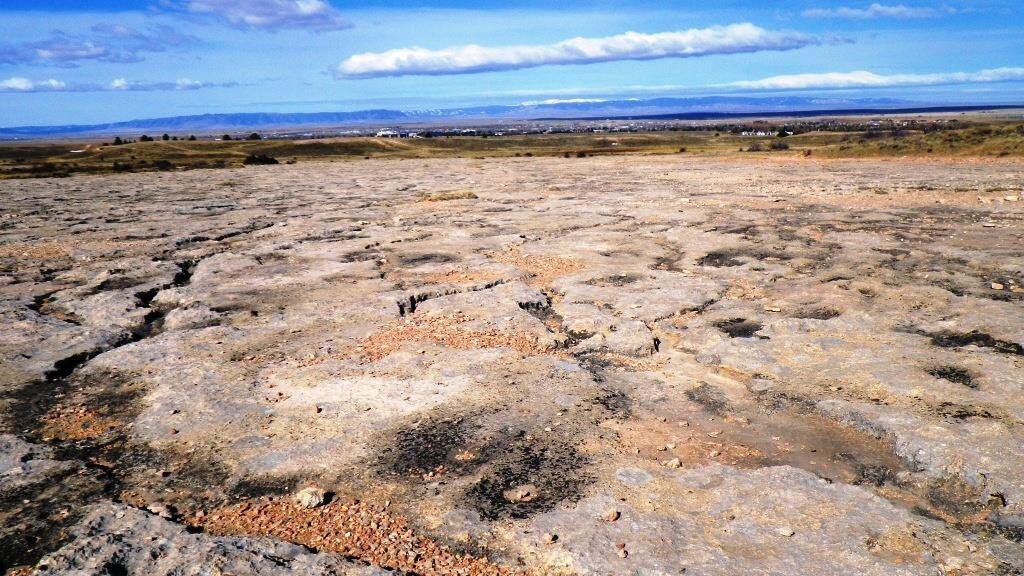
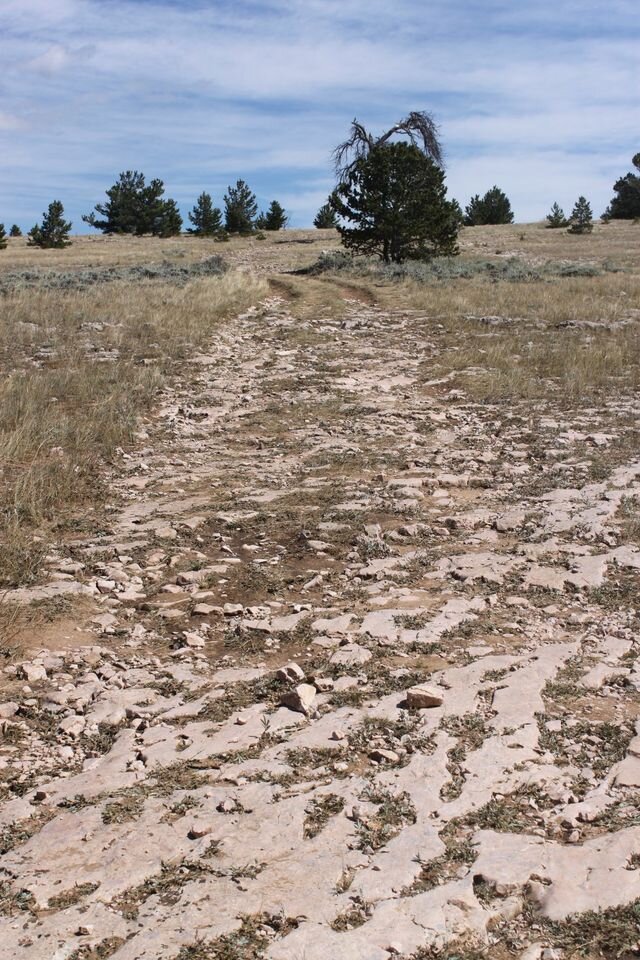
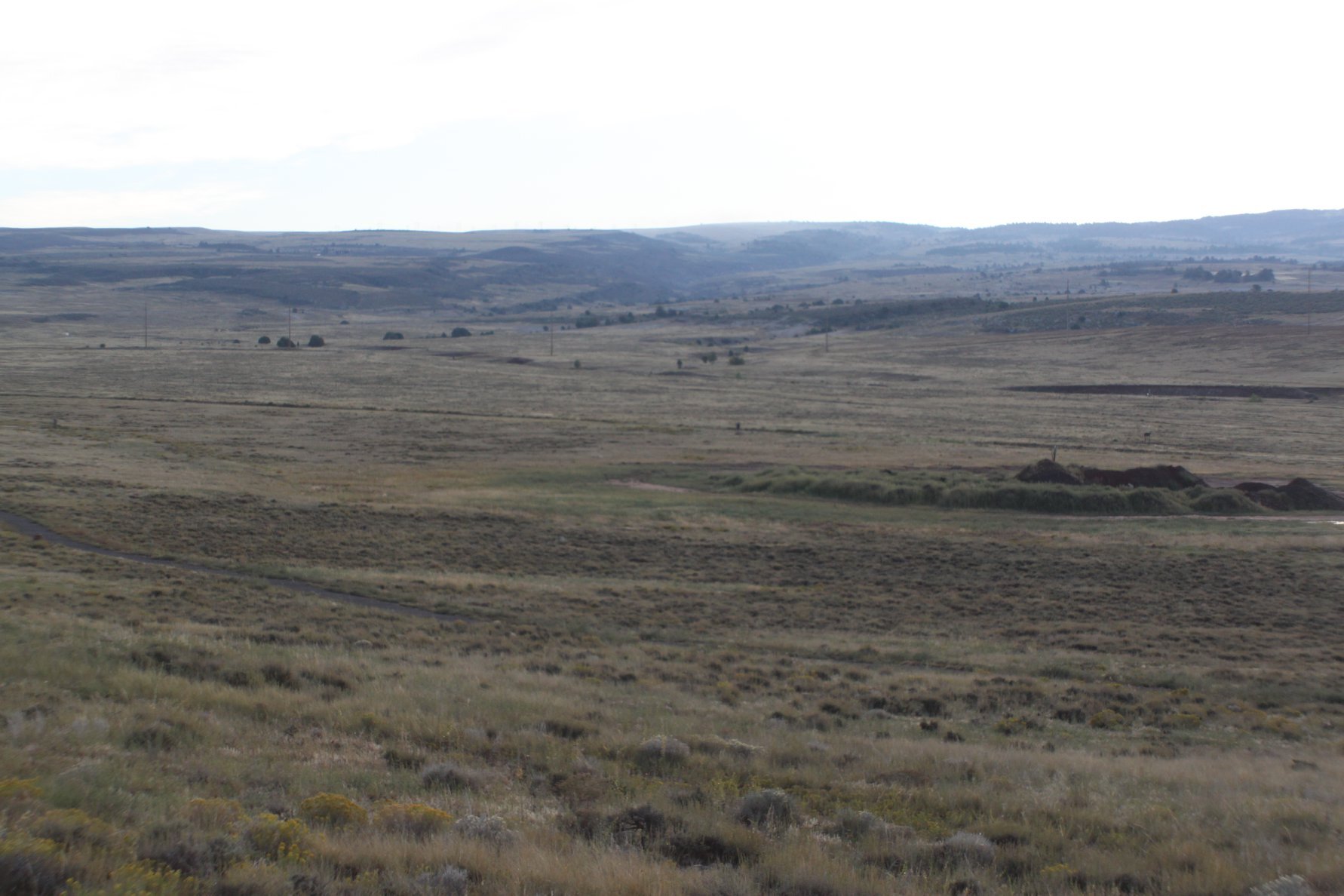
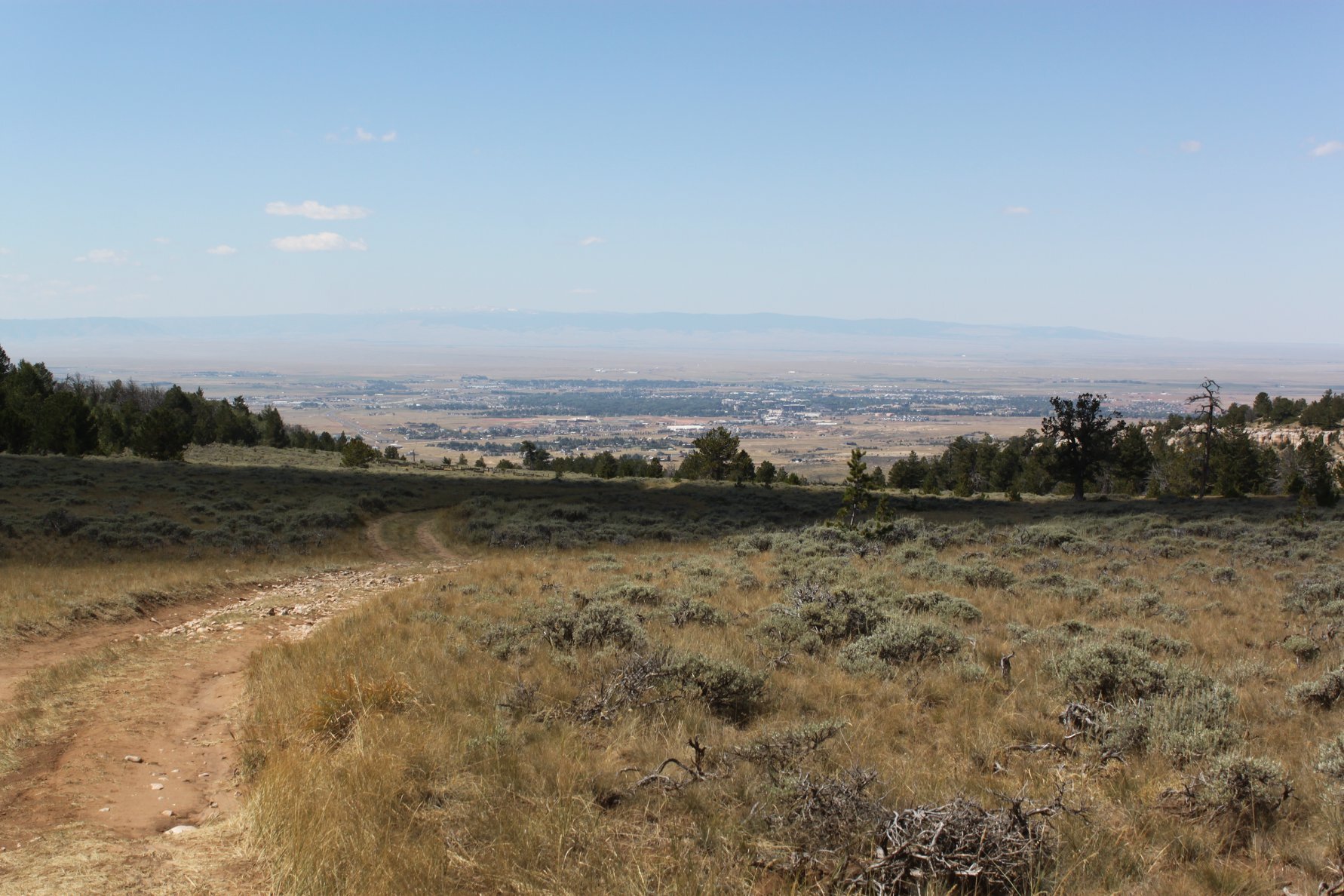
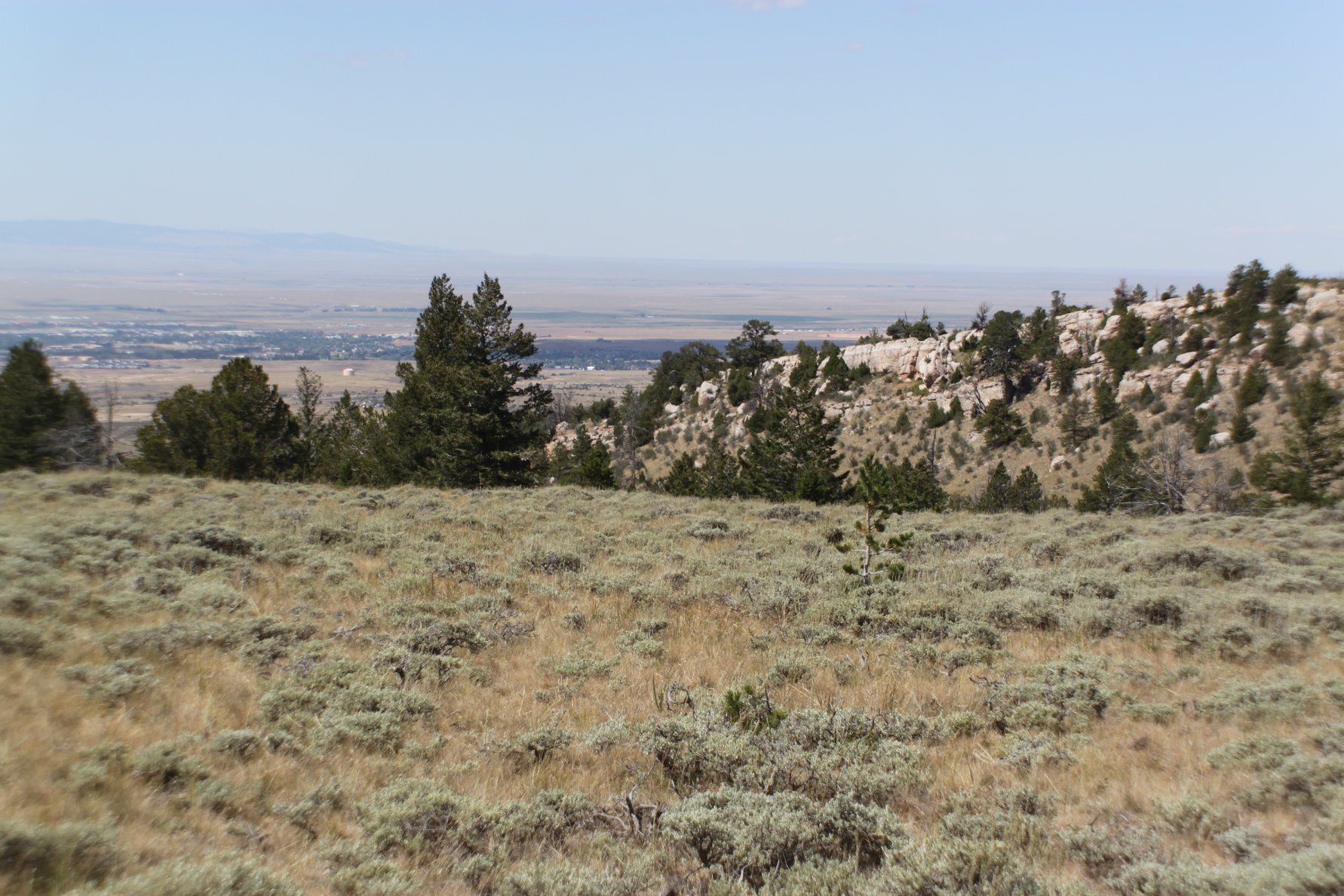
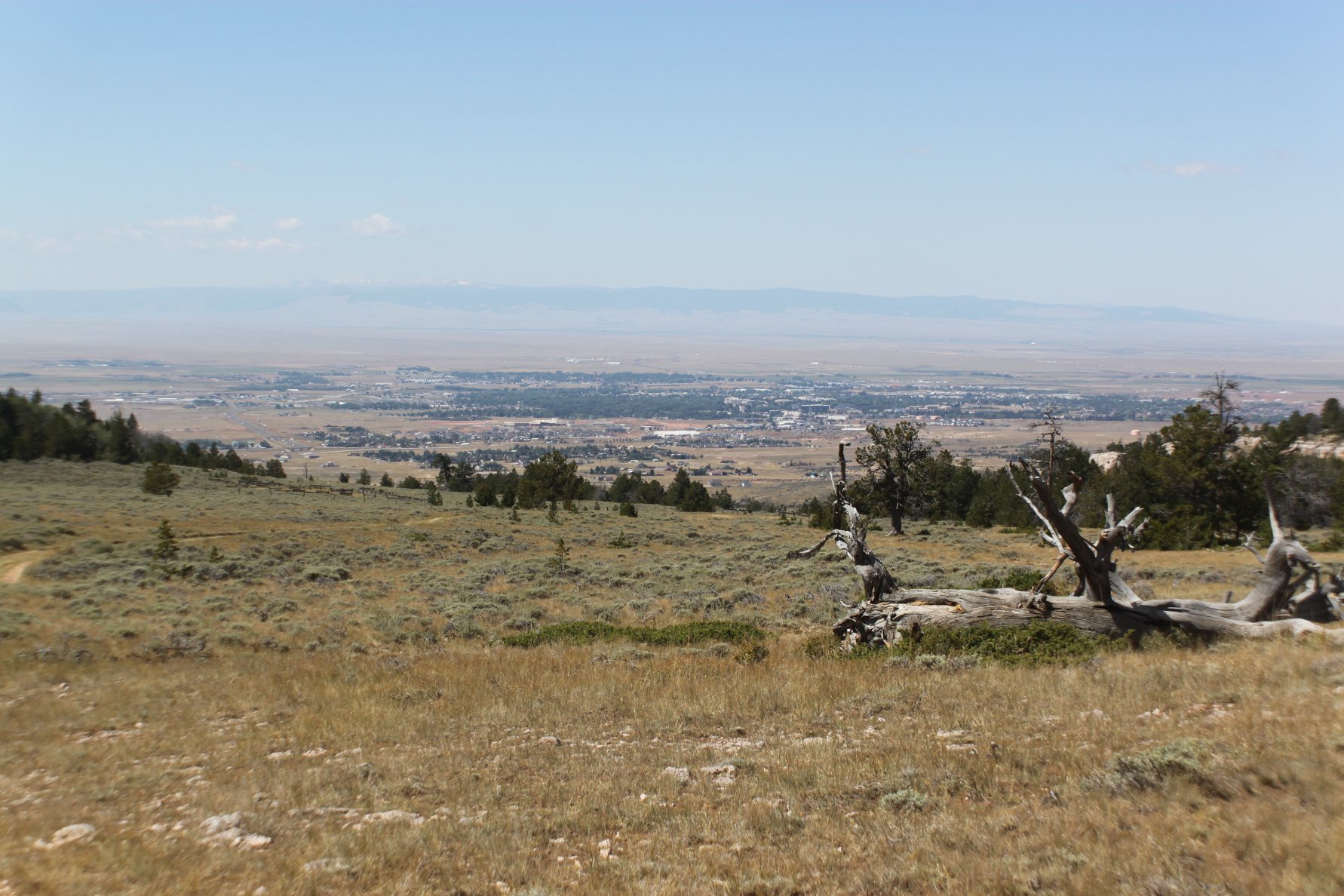
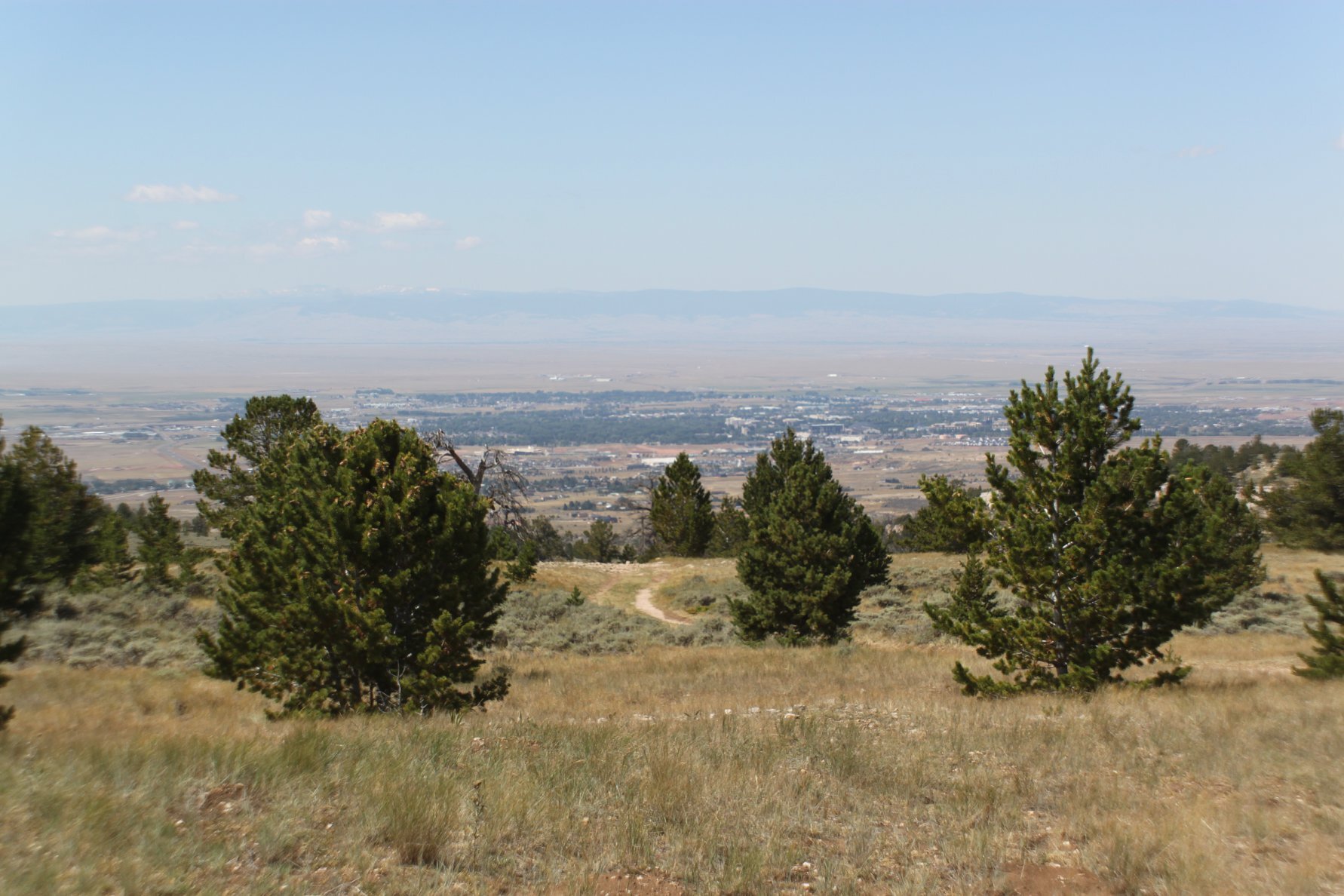
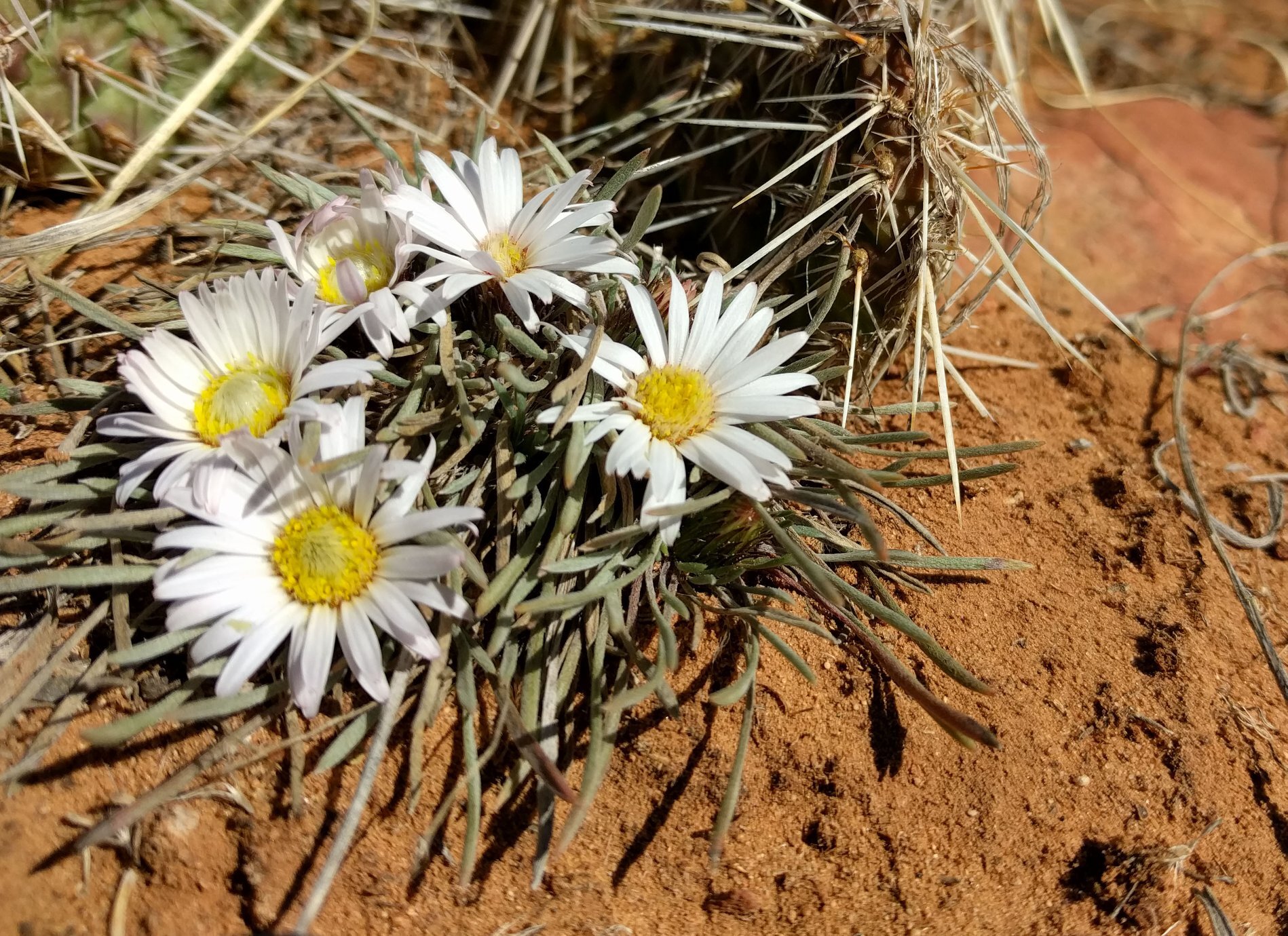
PROJECT HISTORY
The Pilot Hill Recreational Area consists of just over 7,000 acres of open space in the areas immediately east of Laramie, extending from Jacoby Ridge to the Medicine Bow National Forest. Although just finalized this past Fall, the project has been ruminating for several years.
A decade ago, the Samuelson family, owners of Warren Land & Livestock talked to the State about their interest to conserve their 5400-acres of private land on Pilot Hill for wildlife habitat and recreational enjoyment. The idea of a state land exchange for the property was proposed to the state legislature but did not receive the support needed. The Samuelson’s kept in contact with community leaders, then again in 2017, they decided to sell. First, they approached Albany County and the University of Wyoming with the hope to have the land conserved and used for public non-motorized recreation. The Laramie public was strongly in favor, but the county’s budgets were already overstretched. The Samuelson’s were willing and accommodating sellers, but also wanted to sell the property within a reasonable time frame—they gave the county one year to sort out the details of purchasing the land.
It took slightly longer to pull the pieces together, but the Samuelson’s could see progress and extended the purchase agreement. Through a complex weave that included multiple stakeholders, negotiating management, and a public land swap, the purchase was fully completed in July 2020. This first involved the University of Wyoming buying about 1200 acres in November 2019 and the remainder of the private land purchased through a Wyoming State Trust Lands exchange. These exchanges consist of the state identifying and selling landlocked state-owned public lands elsewhere in the state to the surrounding landowners. The proceeds from those sales went towards the purchase of the Pilot Hill parcels. That land, along with two adjoining state parcels, are now under a 25-year Special Use (Recreation) lease to the county from the Office of State Lands and Investments. The final piece of the project is an under-review lease application for a connecting piece of BLM land for a total of just over 7,000 jointly managed acres.
Original land ownership before the purchase and joint management agreement (courtesy Pilot Hill, Inc.)
In October 2017, the stakeholders formed the Pilot Hill Executive Oversight Committee to coordinate the acquisition and raise funds for planning, development and management of the project. A local donor had generously provided funding for an administrator, and the committee started out sharing a University of Wyoming employee with expertise in wildland ecology who seemed a natural fit for analyzing the land. The committee soon realized at this stage they also needed fundraising and coordination in addition to good science. When the executive committee of the Pilot Hill project asked Mathews to help make their idea a reality, she was shocked.
“I was truly surprised because I knew the caliber of the committee,” Mathews remembered. “I was really honored and excited to be part of it.” With a professional background in administering and developing nonprofits, Mathews is now hands-on helping to manage the project.
PLANNING EFFORT
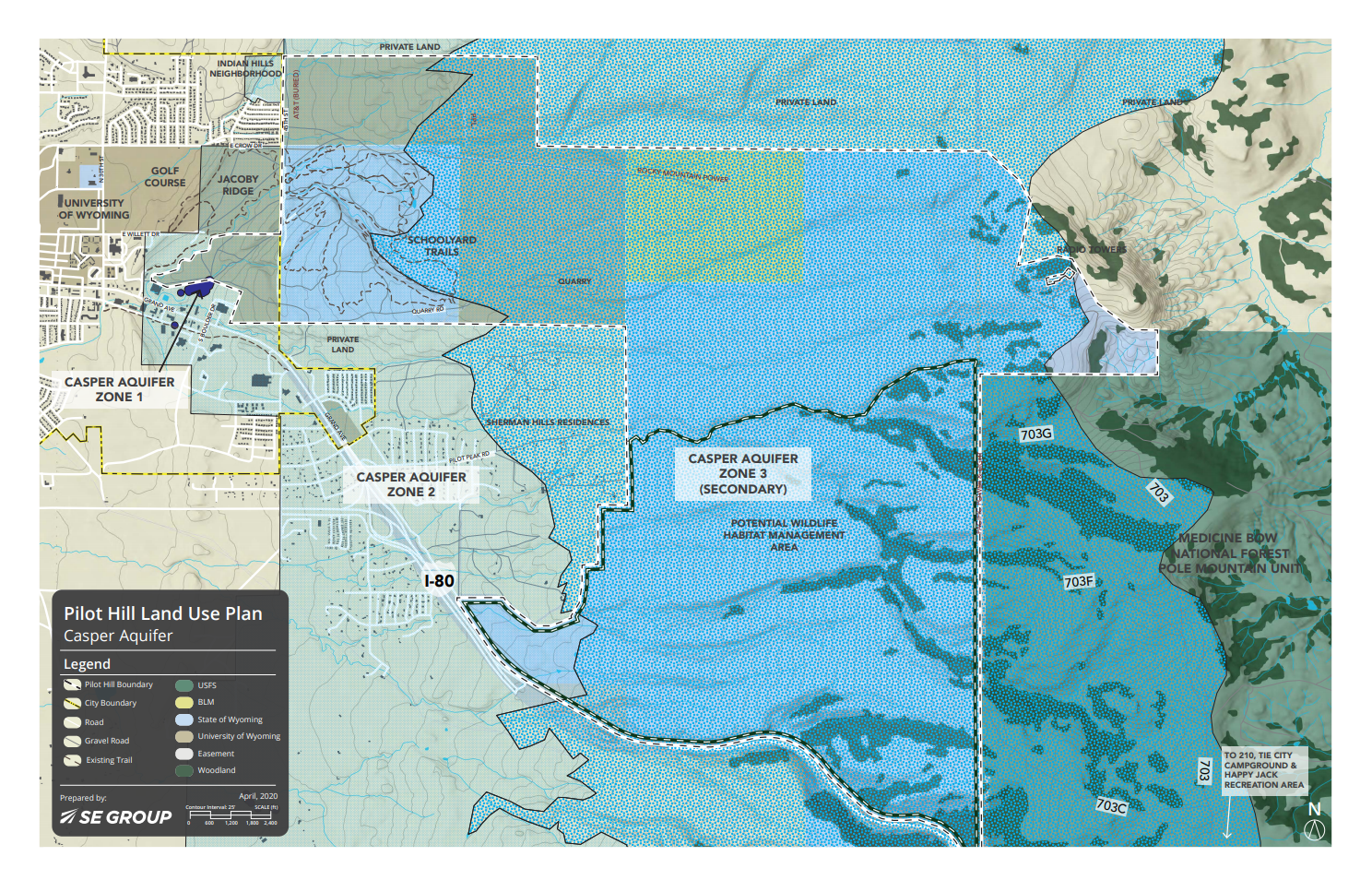

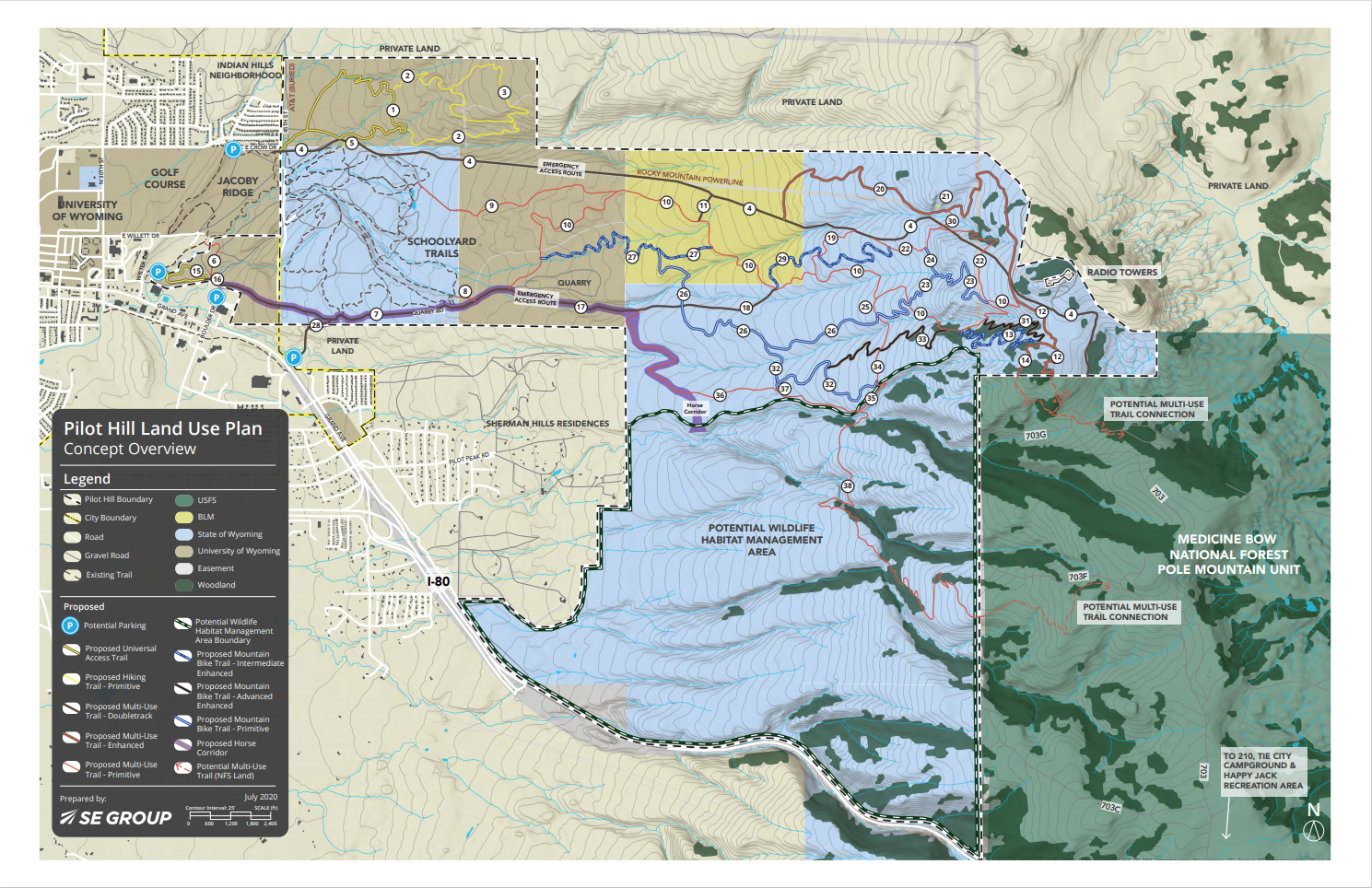
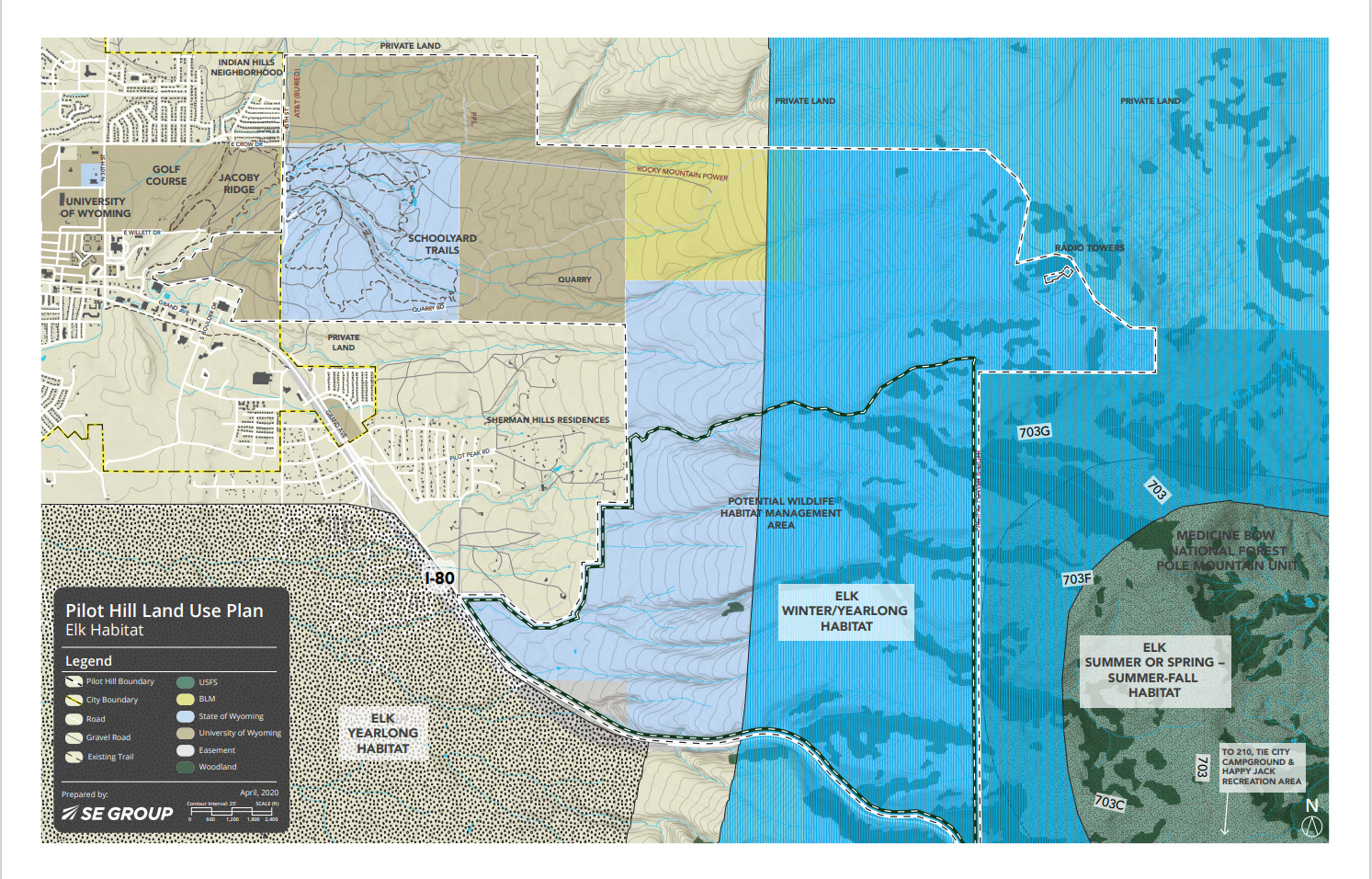
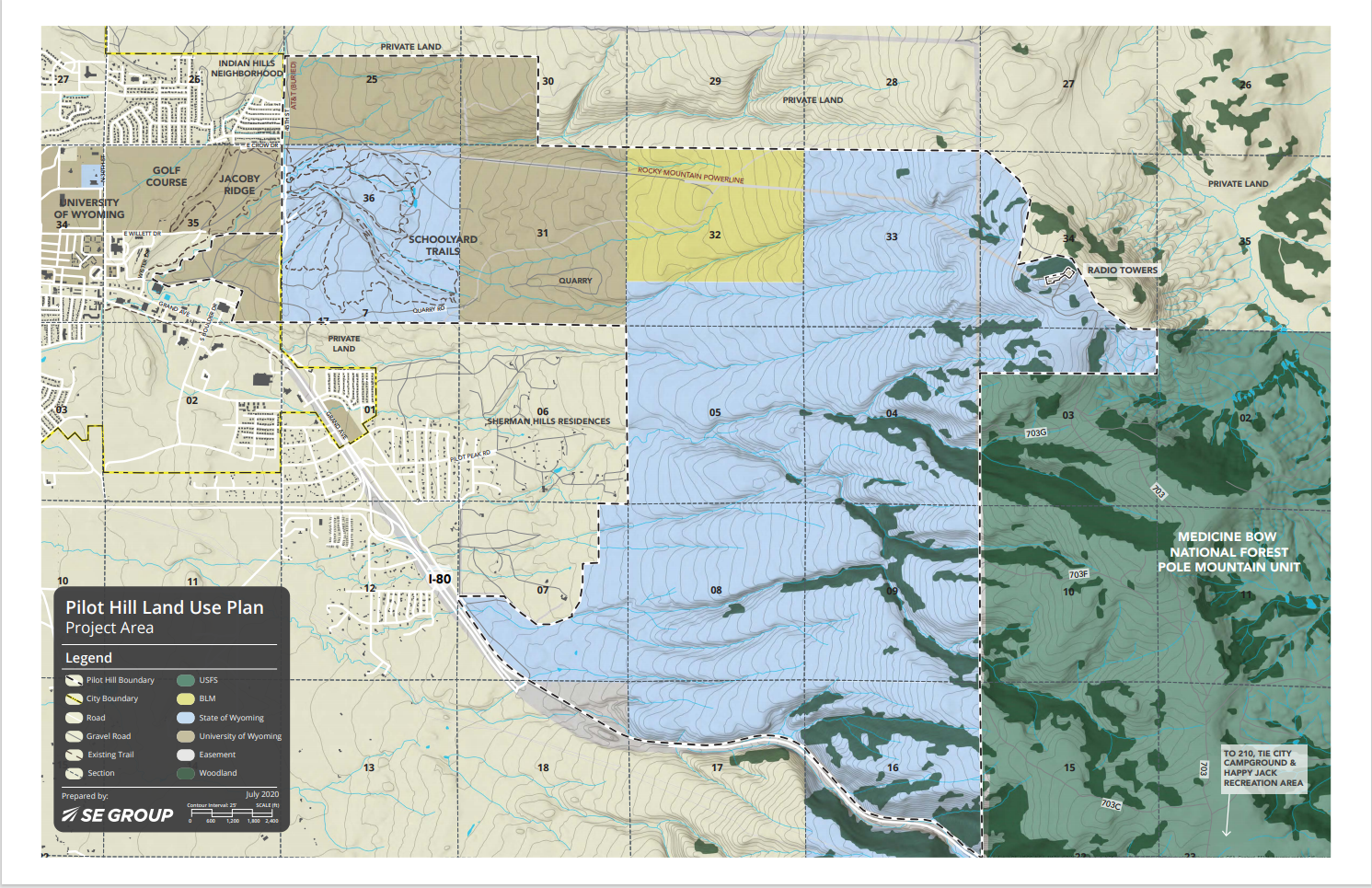
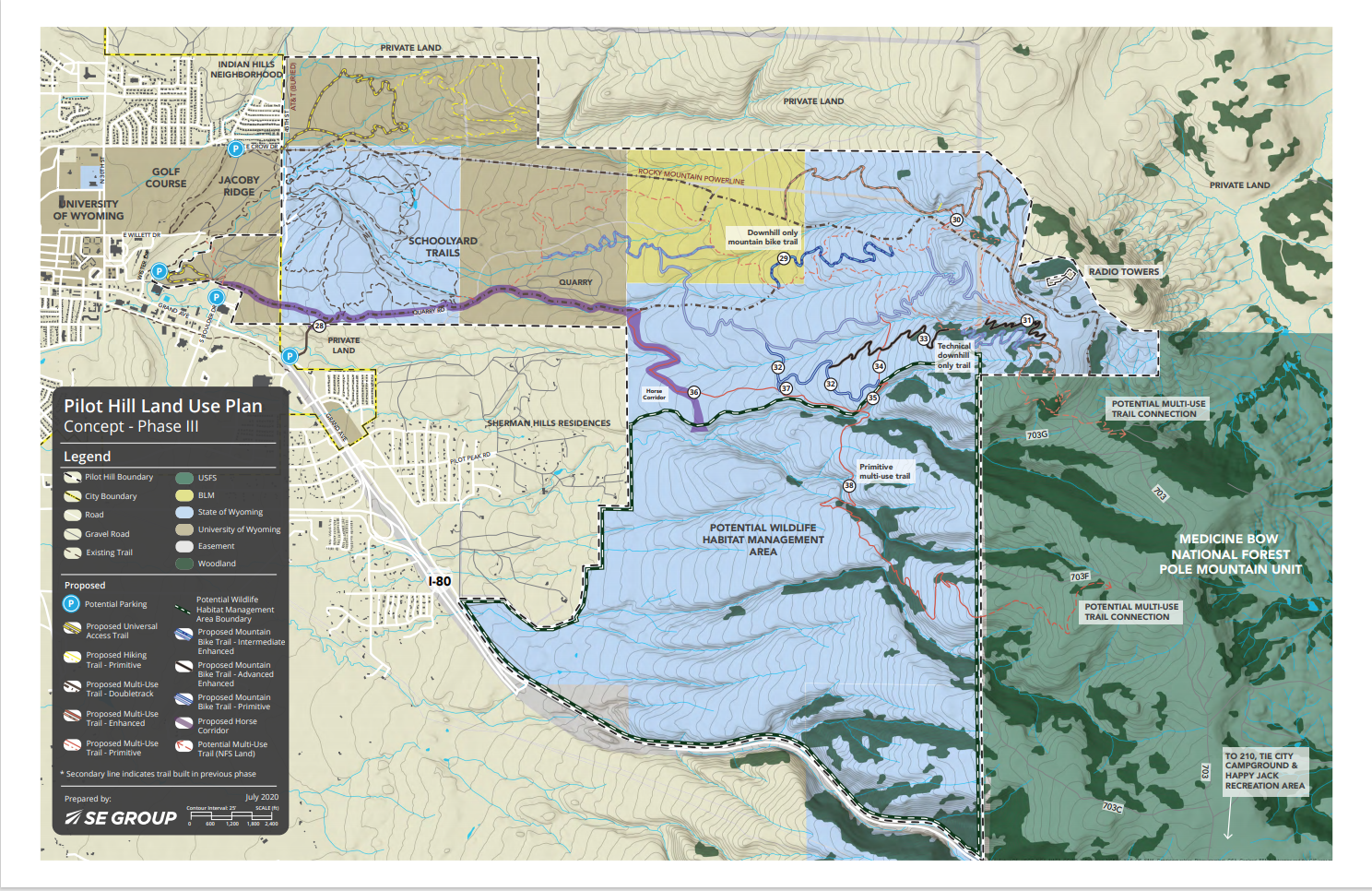
In order to move the project forward, the Pilot Hill Executive Committee wanted to develop a strategic plan for the entire project. After an RFP process, they chose SE Group to help facilitate the planning effort. With offices in Vermont and Colorado, SE Group was initially known for planning ski areas, and that experience has translated into expertise with outdoor and open space conservation, and a wide variety of recreation-oriented areas.
The project has multiple and diverse stakeholders and SE Group worked to include the expertise and perspectives represented therein. These groups included the Pilot Hill organization and board, Albany County, the City of Laramie, the University of Wyoming, several local and statewide non-profits, and federal and state agencies including the U.S. Forest Service, Bureau of Land Management, Wyoming Game and Fish, Wyoming State Parks, and Wyoming Office of State Lands and Investments. Other state agencies helped with analysis and technical input like the Wyoming Department of Transportation and the State Archeologist. Several state and federal representatives were organized into an interagency working group who reviewed and analyzed plan drafts against their agency vision and capacities.
Members of the public meet during a public meeting to discuss the project (courtesy Pilot Hill, Inc.)
Public outreach prior to the formal planning process highlighted the community’s strong support and interest. Through surveys and public meetings prior to the planning effort, it was clear the public wanted non-motorized recreation balanced with protection of the aquifer and conservation of open space and wildlife habitat. During the more formal planning process, the Pilot Hill committees hosted numerous community discussions and presented to the public in over 100 meetings and community events. In the Fall of 2019, there were two Community Access days where the public used the space and provided feedback on their ideas and experience. 1
Once drafted, the design concept was presented at a public workshop in January 2020 with facilitation and support from UW’s Haub School. With COVID restrictions, the revised plan was shared with the public in June 2020 via an online presentation. Throughout it all, the public was actively engaged. “Honestly, the tremendous support from the community was just overwhelming,” said Mathews. “We couldn’t be happier.”
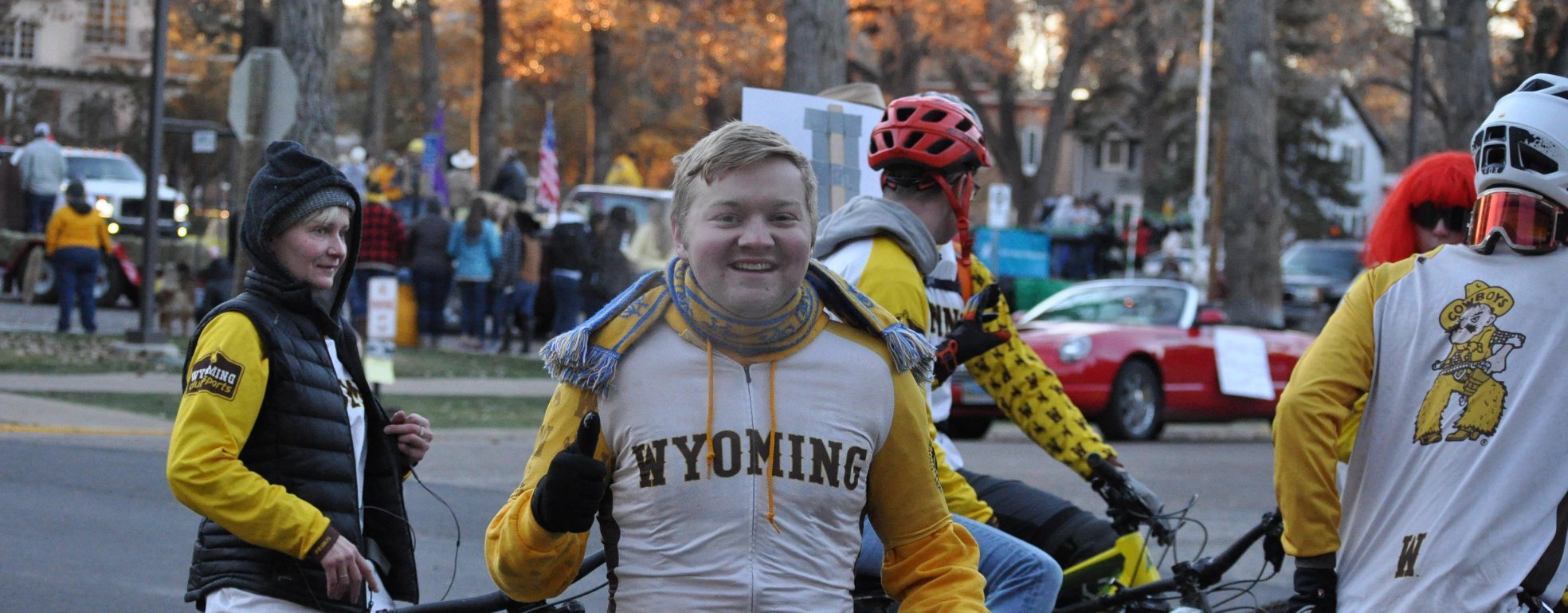
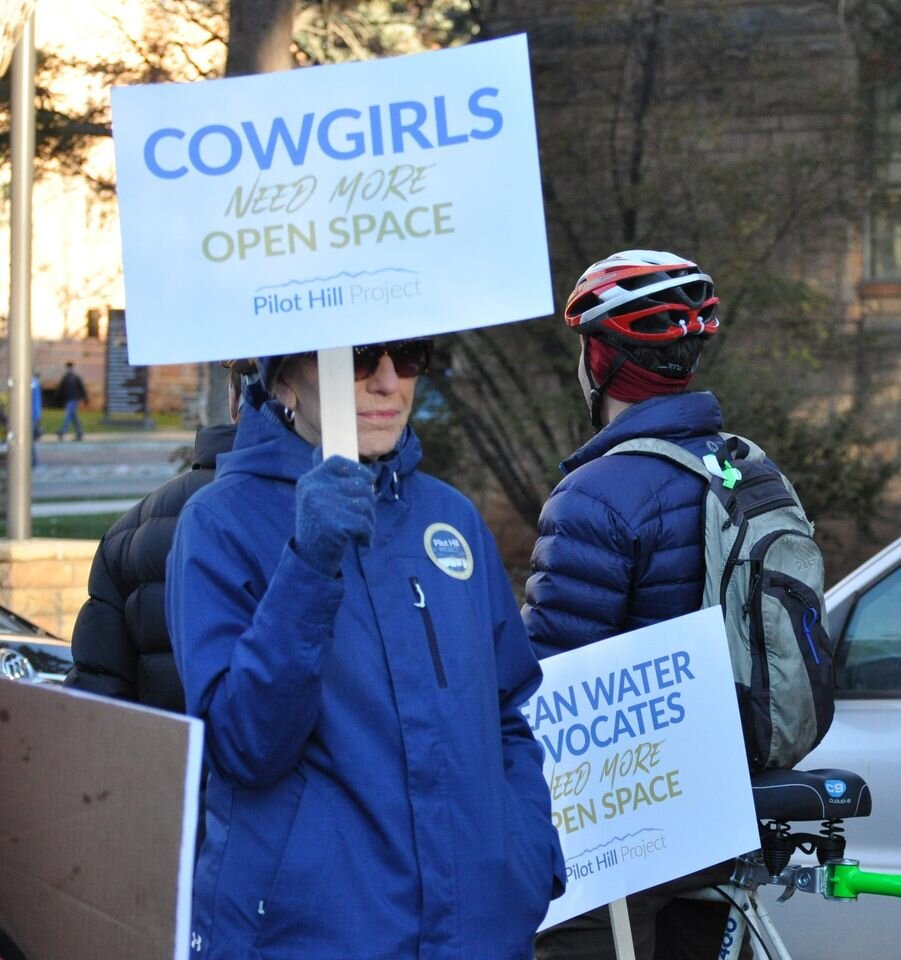
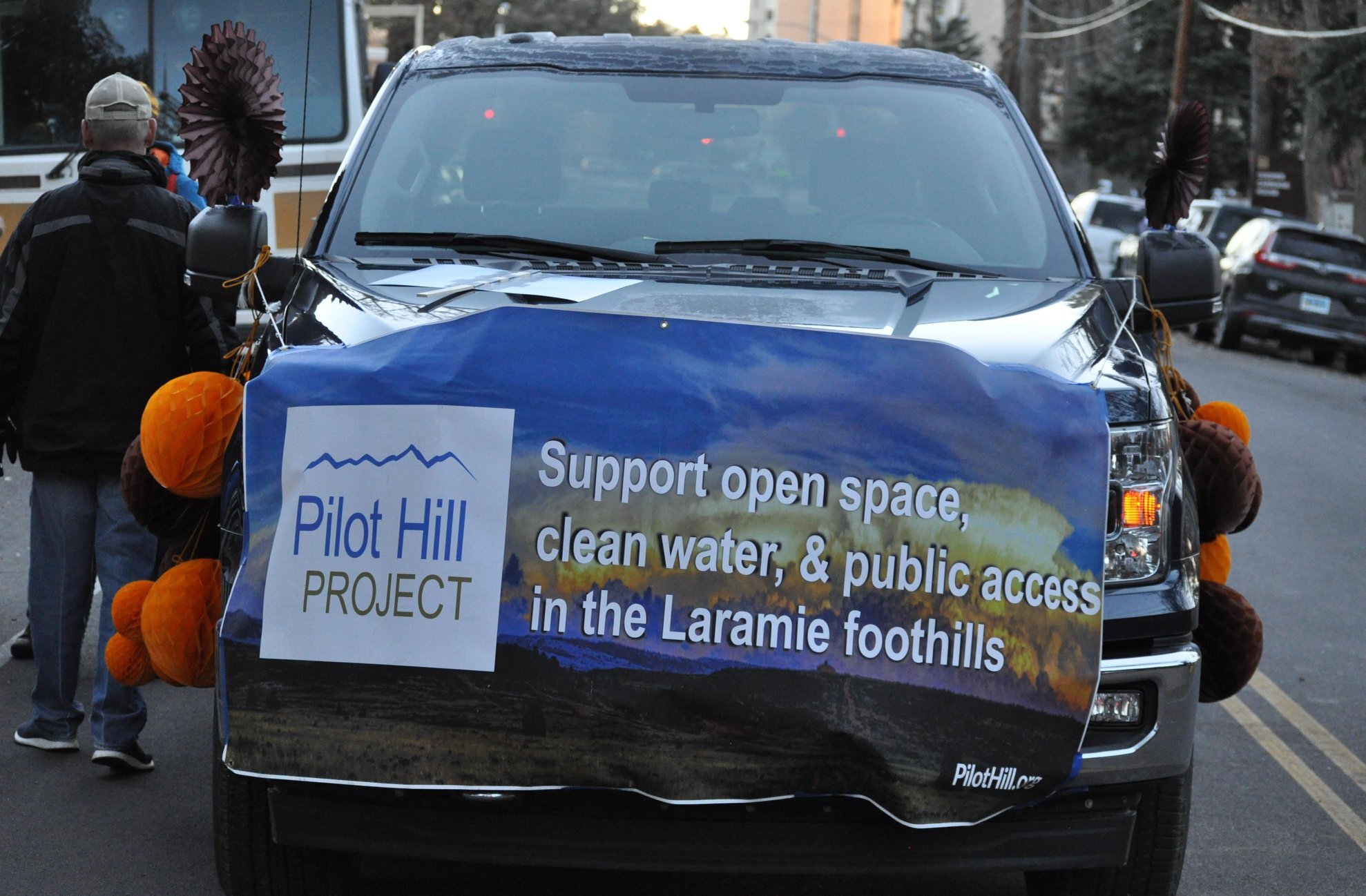
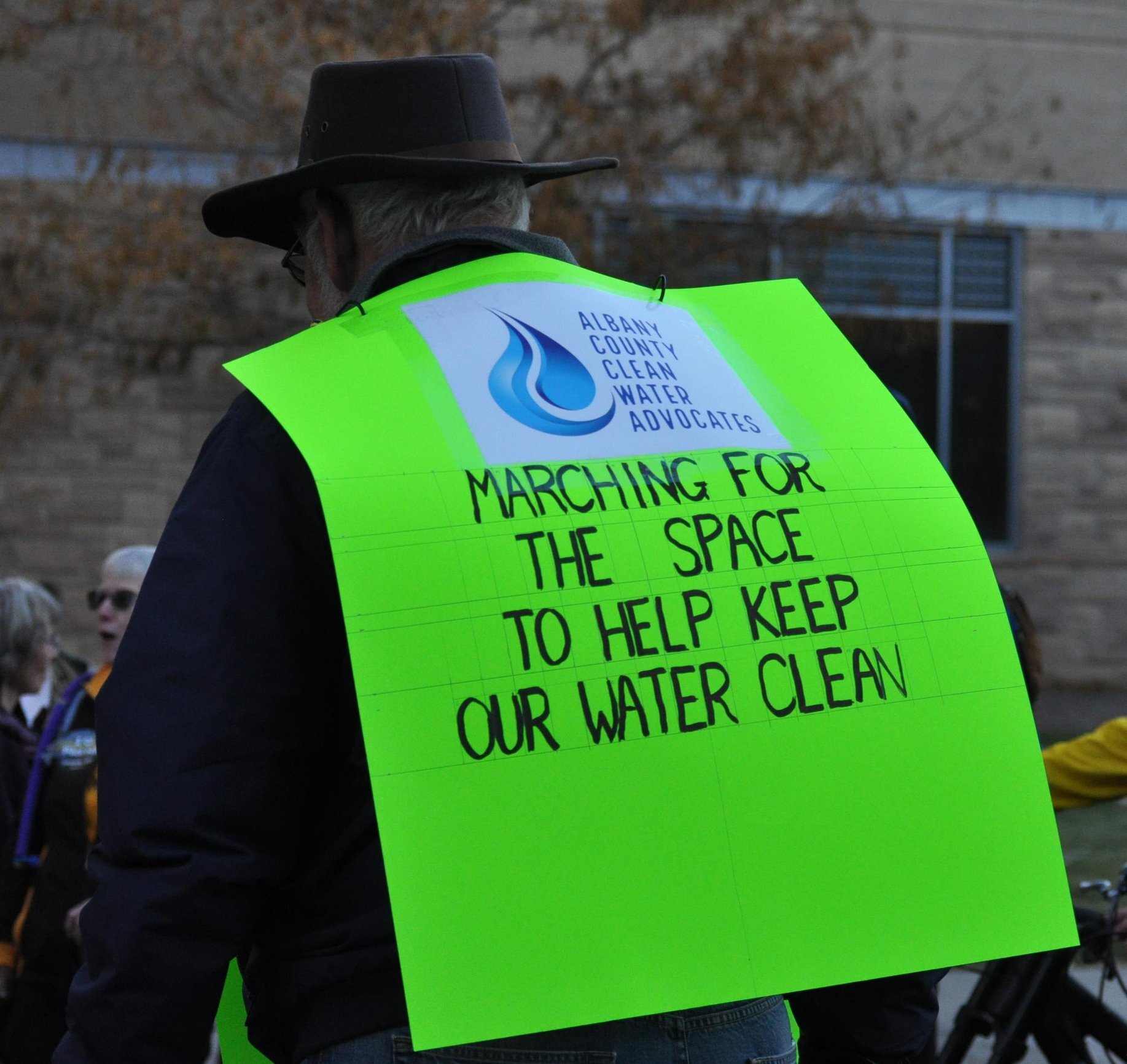
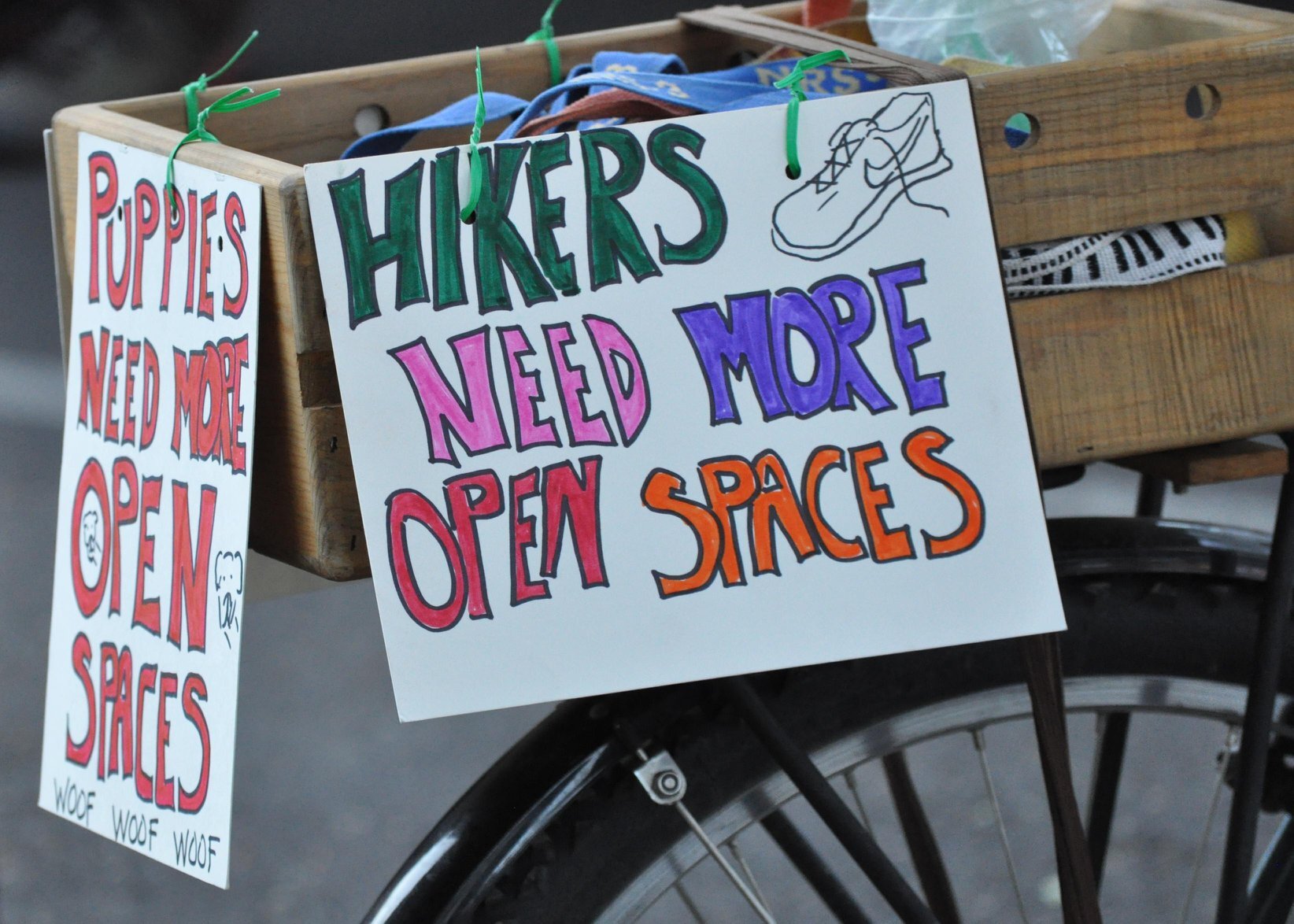
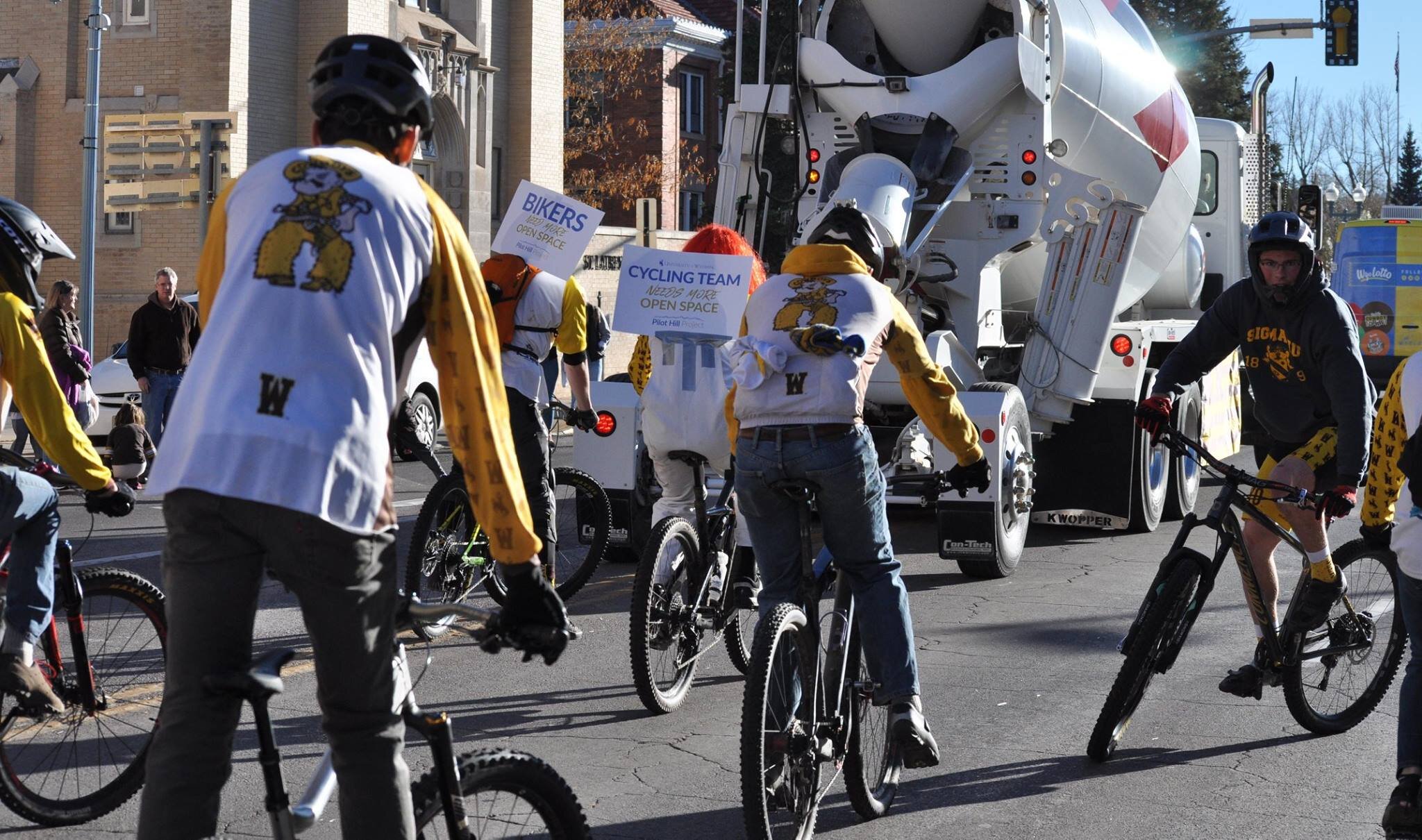

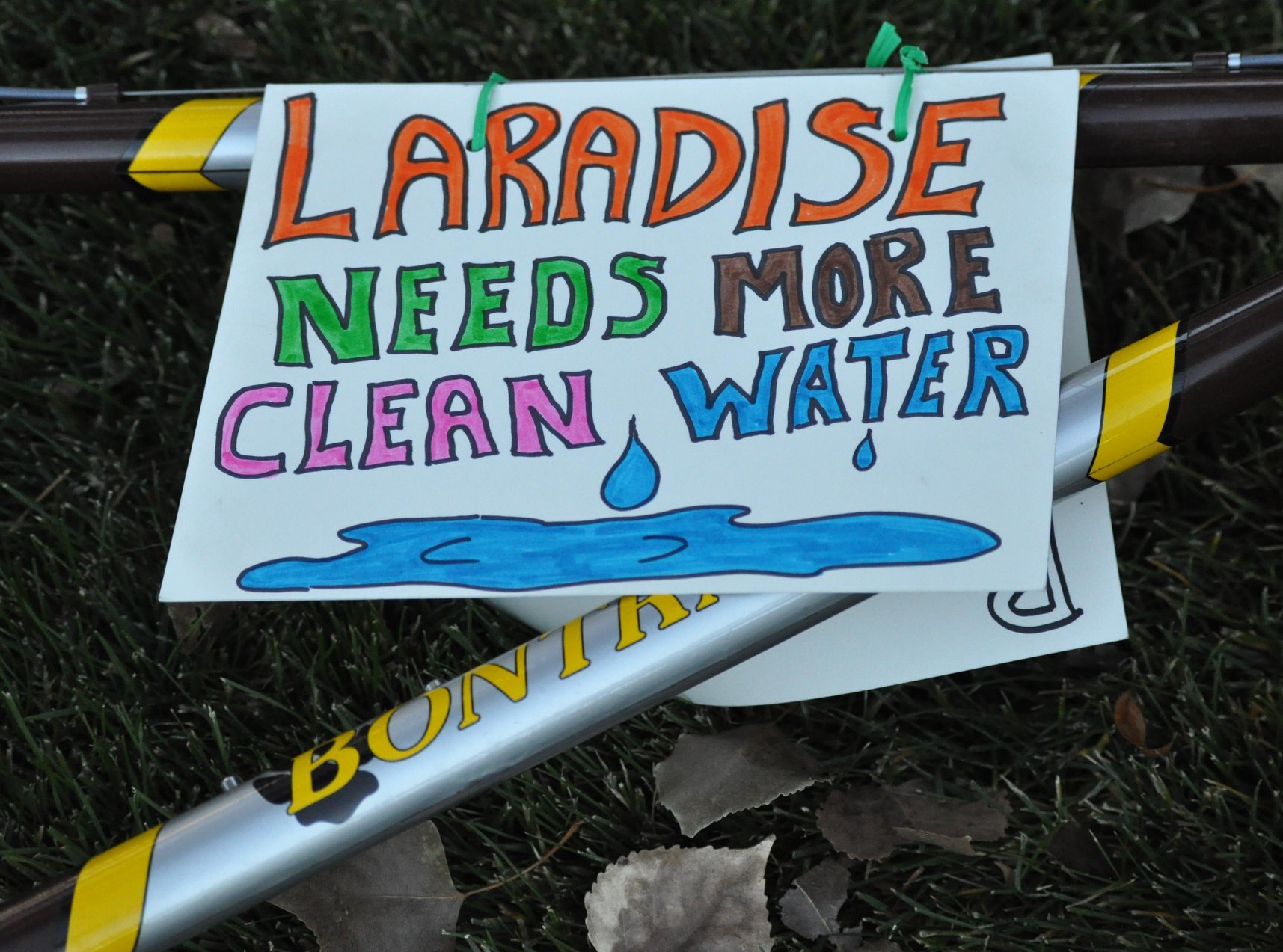
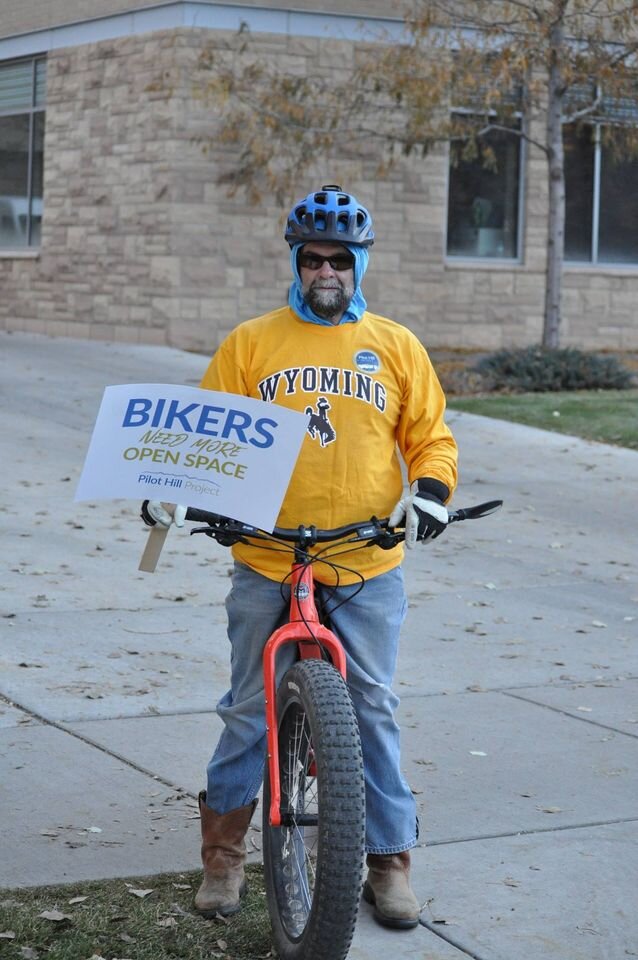
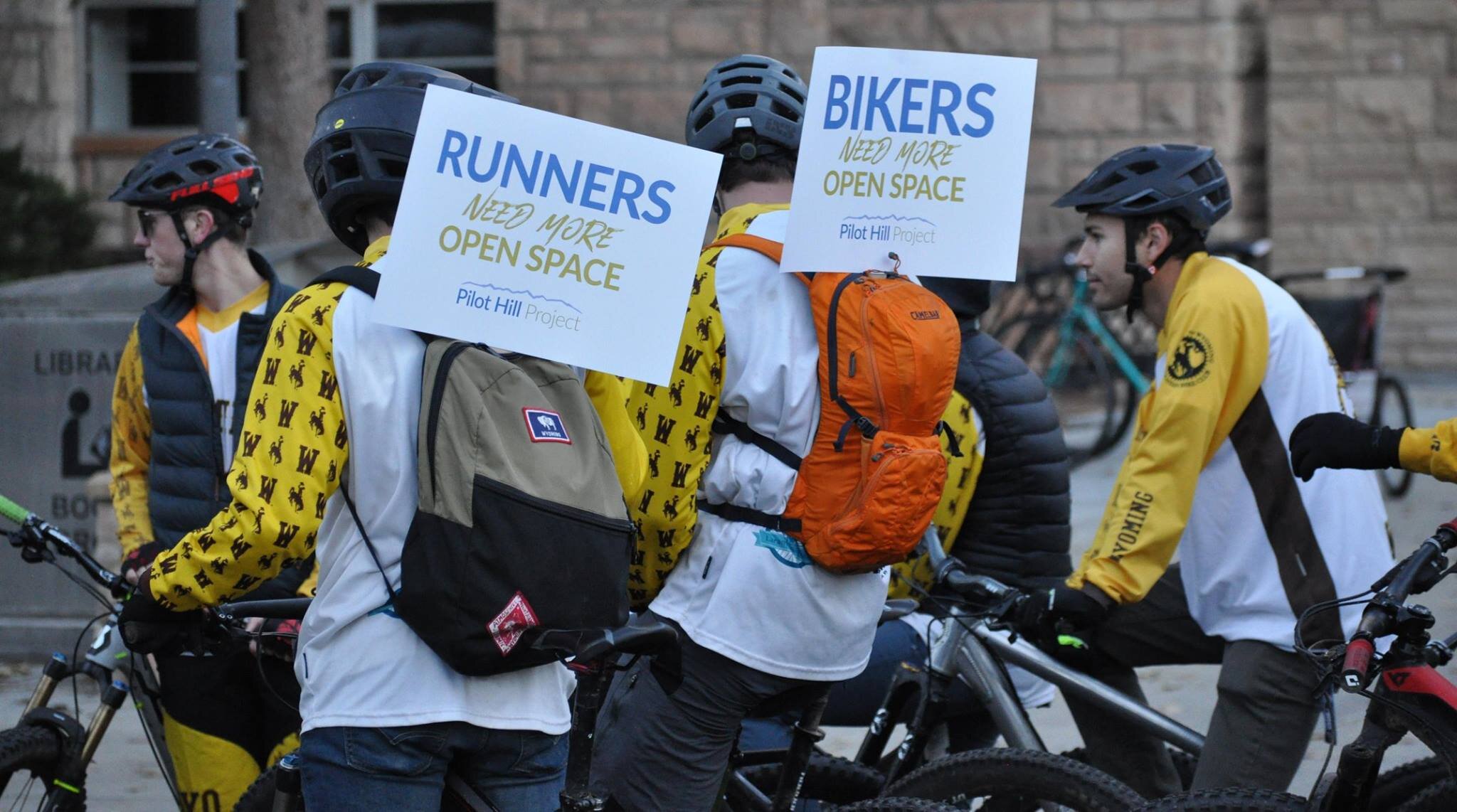
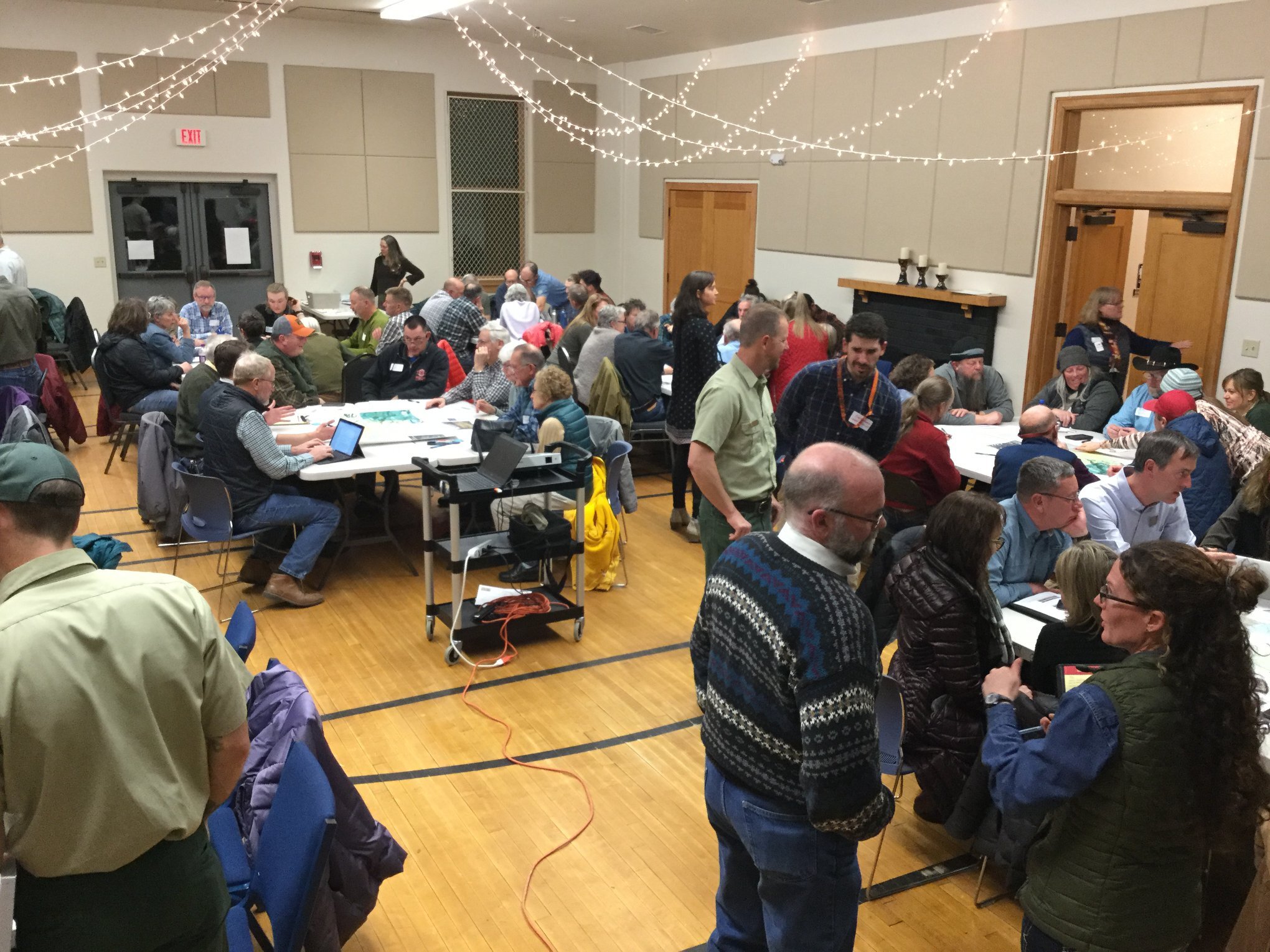
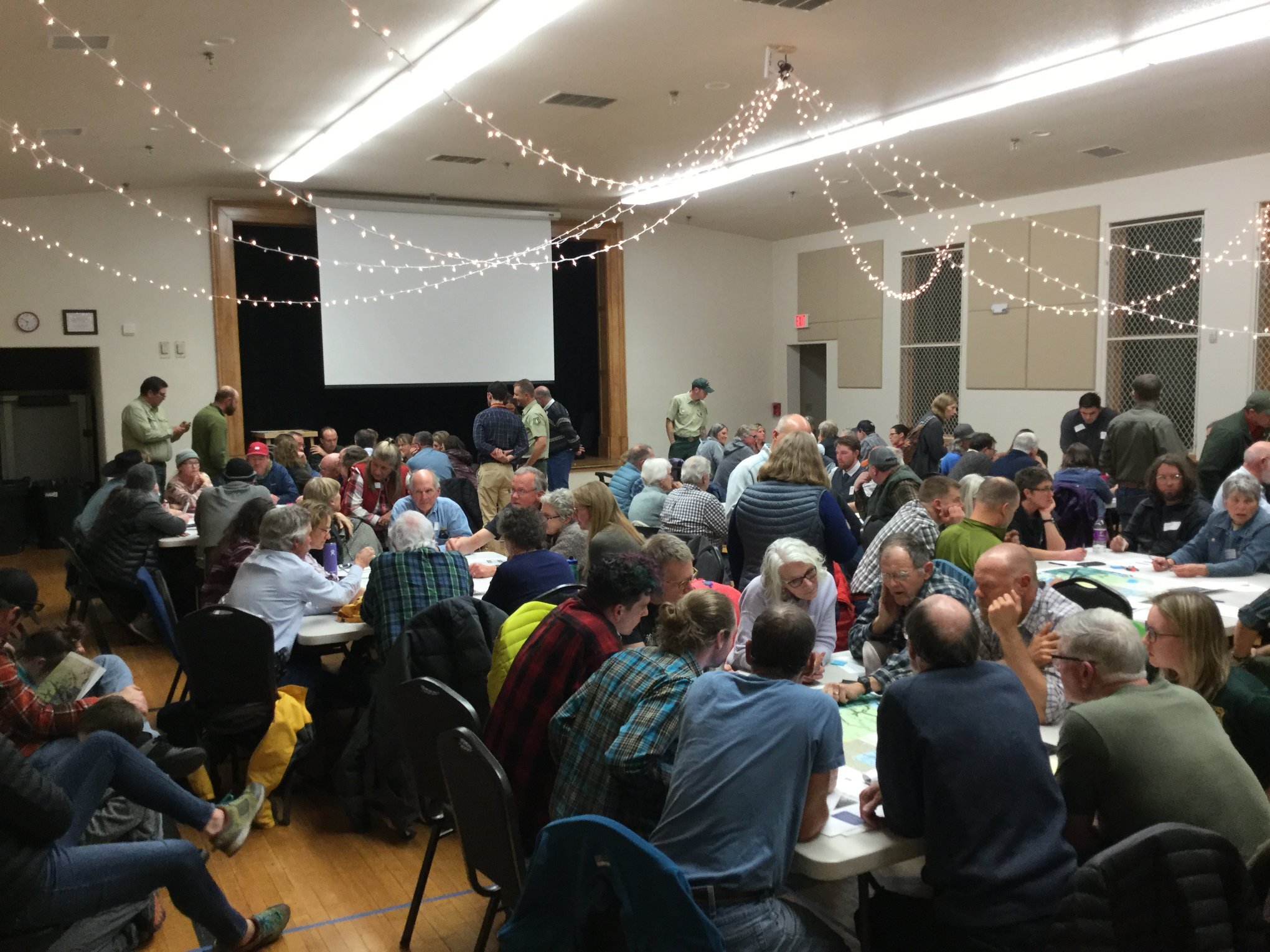
Phase one will hopefully begin this coming summer. It will include an emergency access route to the edge of the property to help ensure safety for users throughout the property. Included in the proposed 21 miles of trails will be some pedestrian-only and ADA accessible trails. Phase two will include another 12 miles of trails, creating additional loops connecting adjoining sections of the primary trails. Phase three will include creation of more challenging mountain biking trails, as well as access to specific areas for educational purposes.
“It really is thoughtfully designed in terms of making sure that we are connecting to the city’s plans for expansion of the city trail system,” said Mathews, “We’re hopeful that people will come to Laramie, do some outdoor activities on Pilot Hill, follow those trails downtown and to the Laramie River and enjoy our river trail also.”

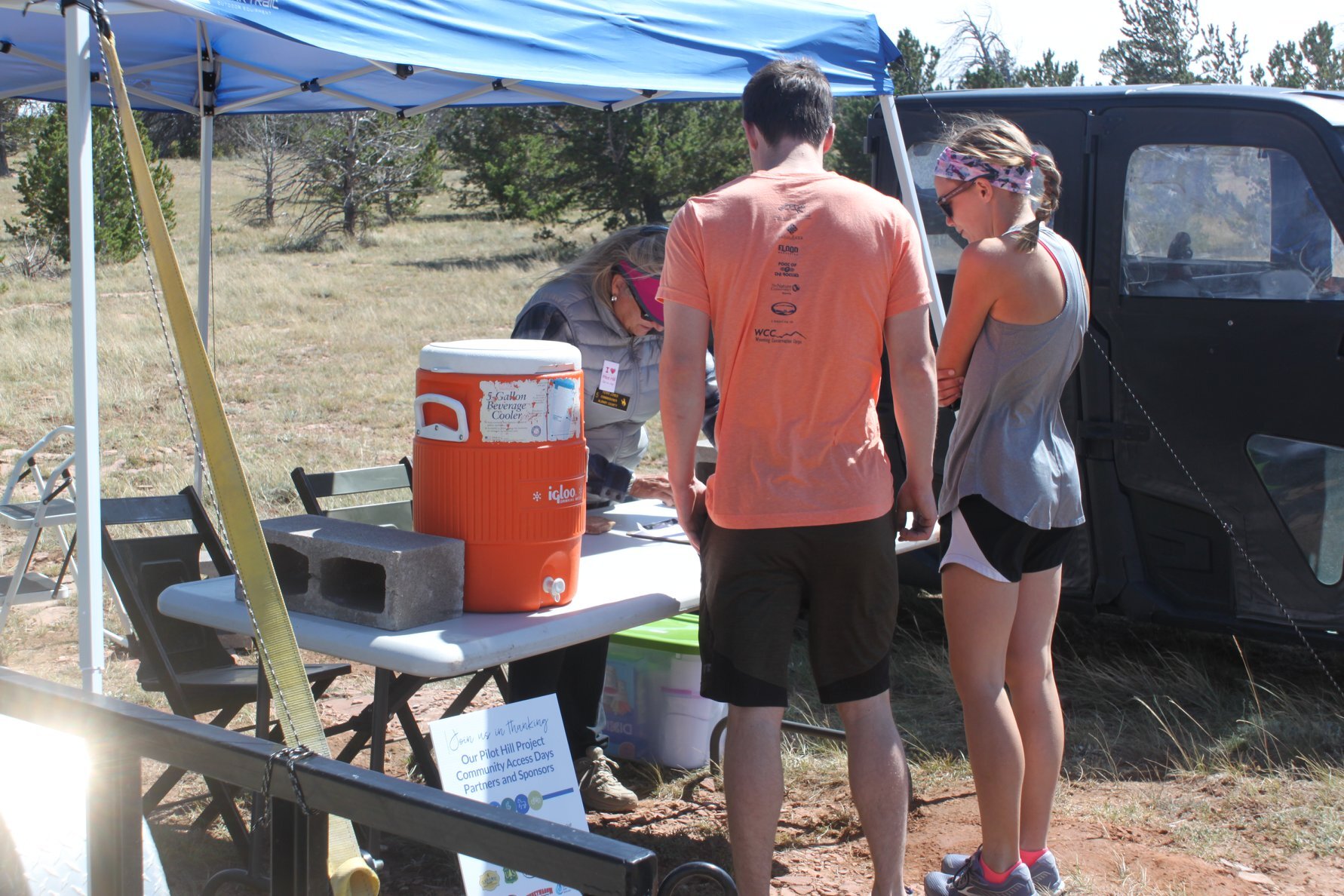

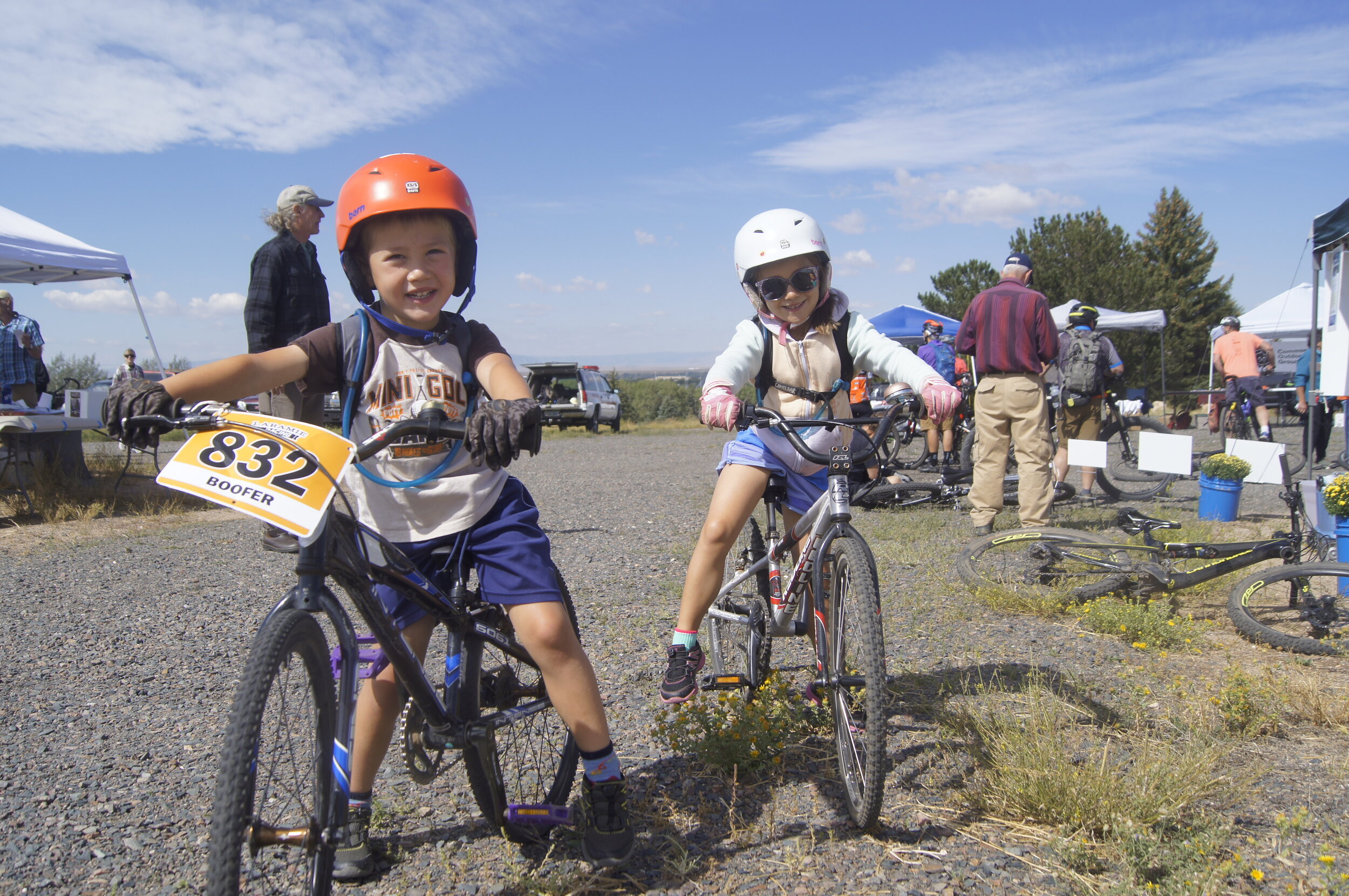


LAND USE
Locals had already begun tapping the recreational potential of the site. On one state-owned section, the county had already provided leased use to Laramie BikeNet, a local mountain biking group. Among other programs, to support the youngest riders, BikeNet offered 3rd–8th graders participation in Laramie Youth Cycling. For older kids, since 2010, the local middle and high schoolers have a mountain bike team—the 7220 Speed Goats—who rode on parts of the property.
While many were excited about recreational opportunities, the area is also an essential ecological and biological treasure. The area is home to a large elk herd, prong-horn, moose, mule deer, and smaller mammals—many of these sheltering and foraging in the canyons during winter months. Hunters regularly used parts of the area. In addition, the area is a significant and delicate part of the recharge zone for the Casper Aquifer. As development continued pressing eastward, protecting the area from development was of high interest for the city.
A large elk herd, in addition to mule deer, prong-horns, and moose use the property.
A big win came recently when the Wyoming Game and Fish Department (WGFD) agreed to partner with Pilot Hill in managing 3,076 acres as a Wildlife Habitat Management Area (WHMA). Not only does that enable greater conservation of critical habitats, but creates an opportunity for innovation—this is the Department’s first management area adjacent to a community. “It really is an opportunity for them to create a new model,” said Mathews.
An early advantage for wildlife management came during the land exchange phase of the project. In a partnership with UW researchers, WGFD, and the former landowner, over 60 game cameras have been placed in the area, to gather data and monitor the current activities of wildlife. To help manage the oversized elk herd and keep other populations in check, hunting will be allowed in the wildlife management area, with permits restricting access and a buffer area from any neighboring homes. Consisting of the southeastern area of the overall recreational area, the WHMA will allow for more controlled hiking, horseback riding, and mountain biking, putting the recreational focus on the northern parts of the site.
Not only does the property have a significant recreational draw, but part of the hope for preserving this area is economic. As outdoor recreation has multiplied in diversity and popularity, researchers continue to study and attempt to quantify the benefits of nearby public lands. One report by Headwaters Economics finds a competitive advantage for Western cities with nearby amenity-rich public lands to attract and retain skilled workers and businesses.2 These areas have grown at over triple the rate compared to similar counties without such amenities. More recently during the ongoing COVID pandemic, these amenity-rich, high outdoor access communities became known as “Zoom Towns” from the droves of remote professionals moving temporarily or permanently there to escape urbanity with smaller town living.
While Laramie could easily be considered as having ready access to amenity rich outdoor recreation, the area has struggled economically over the years. “We recognize that tourism is going to be the driving economic force in Albany County for the coming years. We don’t have mineral assets that can be leveraged the way some other counties in the state have,” said Mathews. “Our tourism industry is really key.” With mountain biking, trail running, snow shoeing, horseback riding, and hiking amenities being formalized, developed, and access preserved, the University recognized the property as a key asset in attracting both faculty and students, as well as an asset to “all programs that end in -ology.”
LAND MANAGEMENT
After overcoming the purchasing hurdle, two of the next big challenges are development and management of the area. “We found creative ways to solve the purchase issue,” said Mathews. “Now our board is working to continue to support the financial needs of the project.”
They originally anticipated $1.5 million to initiate the planning and initial infrastructure of the project; the reality coming into focus is much more expensive. Essential parking areas and basic facilities may easily cost over $1 million. In addition to these buildout costs, they anticipate costs to around $200,000 annually to manage the property, maintain trails, collect garbage and operate user facilities. While Wyoming Game and Fish is helping with the lease fee on WHMA part, the remainder will need to be raised through fundraising.
They logically could turn to the city and county for funding but decided against it at this time—like many of Wyoming’s communities, Albany County and Laramie are under significant budgetary strains. Additionally, Albany County is one of the lowest counties socioeconomically in Wyoming and they don’t feel like they can burden the citizens with a bond. With these constraints, they continue to be innovative in fundraising. In September, they put a QR code on access signs asking users who enjoyed their time to consider donating and got a good response. “We do need to think about it really strategically and especially as we get to the phase of the project where we’re really building out some of the more expensive infrastructure,” commented Mathews. They’re exploring ideas like a recreation district and a fee-based use system but continue to work towards a system that works for the area and residents.
In spite of these challenges, they haven’t stopped looking ahead and dreaming of the next step. Eventually they hope to see an open space corridor from Laramie to Cheyenne to Fort Collins. While that seems a far-off wish, somewhere in southeastern Wyoming another little girl is playing in an open field, exploring the landscapes she may be pivotal in preserving one day.
All images were provided by Pilot Hill, Inc., a 501(c)(3). For more information and to help support the Pilot Hill Recreation Area project, visit pilothill.org.
Pilot Hill Land Use Plan, July 2020. Available from https://storymaps.arcgis.com/stories/245b9af334ef455eaa57e891f2c84ed5
https://headwaterseconomics.org/wp-content/uploads/West_Is_Best_Full_Report.pdf





